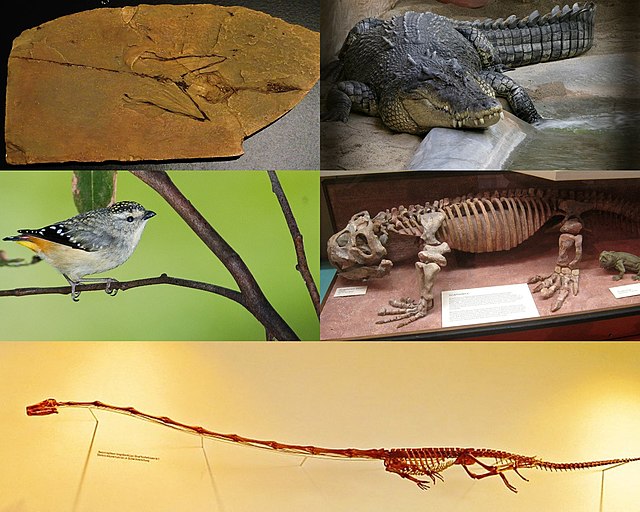Archosauromorpha is a clade of diapsid reptiles containing all reptiles more closely related to archosaurs rather than lepidosaurs. Archosauromorphs first appeared during the late Middle Permian or Late Permian, though they became much more common and diverse during the Triassic period.
Archosauromorpha
An interaction between two archosauromorphs: Ornithosuchus ( a member of Archosauriformes) scavenging on Hyperodapedon (a rhynchosaur)
The skeleton of Protorosaurus, one of the oldest archosauromorphs and namesake of the problematic group "Protorosauria"
Champsosaurus, a gharial-like choristodere which survived the Cretaceous-Paleocene extinction event. Choristoderes may represent the fifth group of archosauromorphs, but their origin is obscured.
Diapsids are a clade of sauropsids, distinguished from more primitive eureptiles by the presence of two holes, known as temporal fenestrae, in each side of their skulls. The group first appeared about three hundred million years ago during the late Carboniferous period. All diapsids other than the most primitive ones in the clade Araeoscelidia are sometimes placed into the clade Neodiapsida. The diapsids are extremely diverse, and include birds and all modern reptile groups, including turtles, which were historically thought to lie outside the group. Although some diapsids have lost either one hole (lizards), or both holes, or have a heavily restructured skull, they are still classified as diapsids based on their ancestry. At least 17,084 species of diapsid animals are extant: 9,159 birds, and 7,925 snakes, lizards, tuatara, turtles, and crocodiles.
Diapsid





